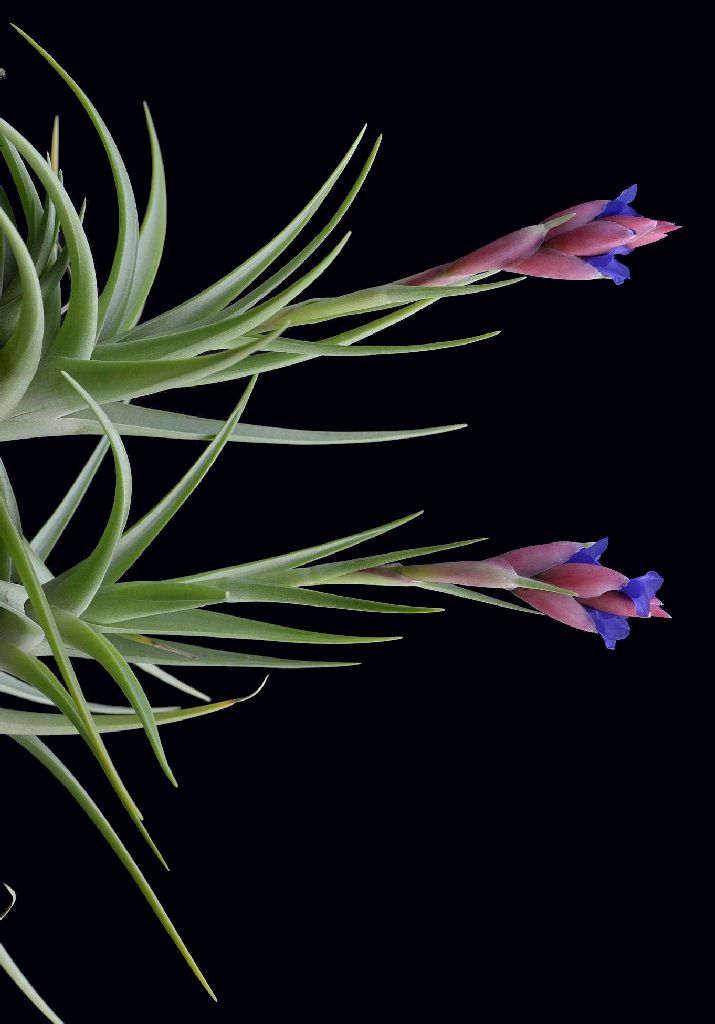

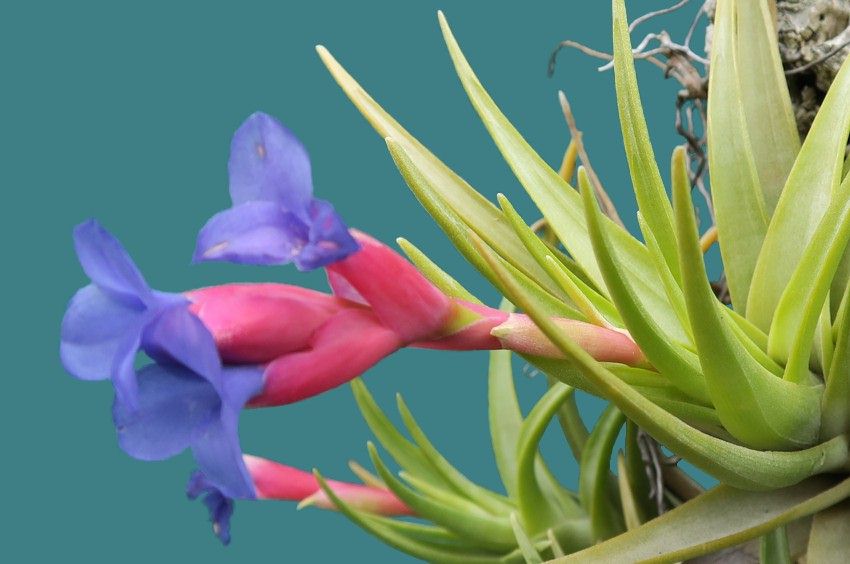
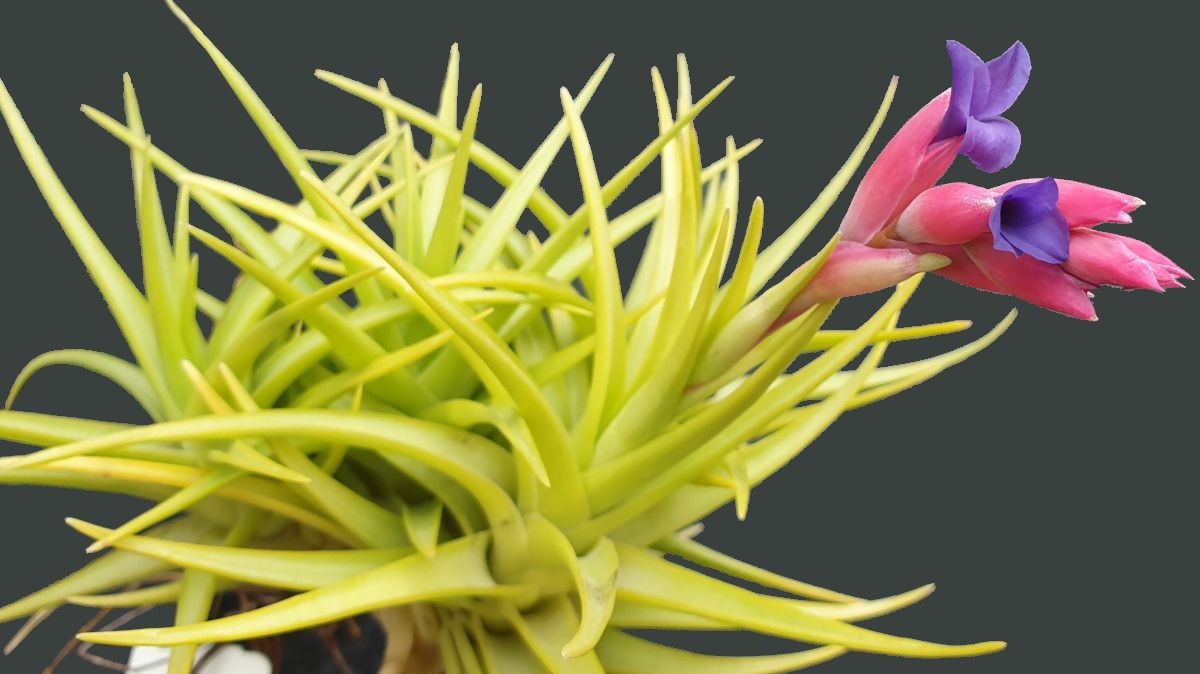
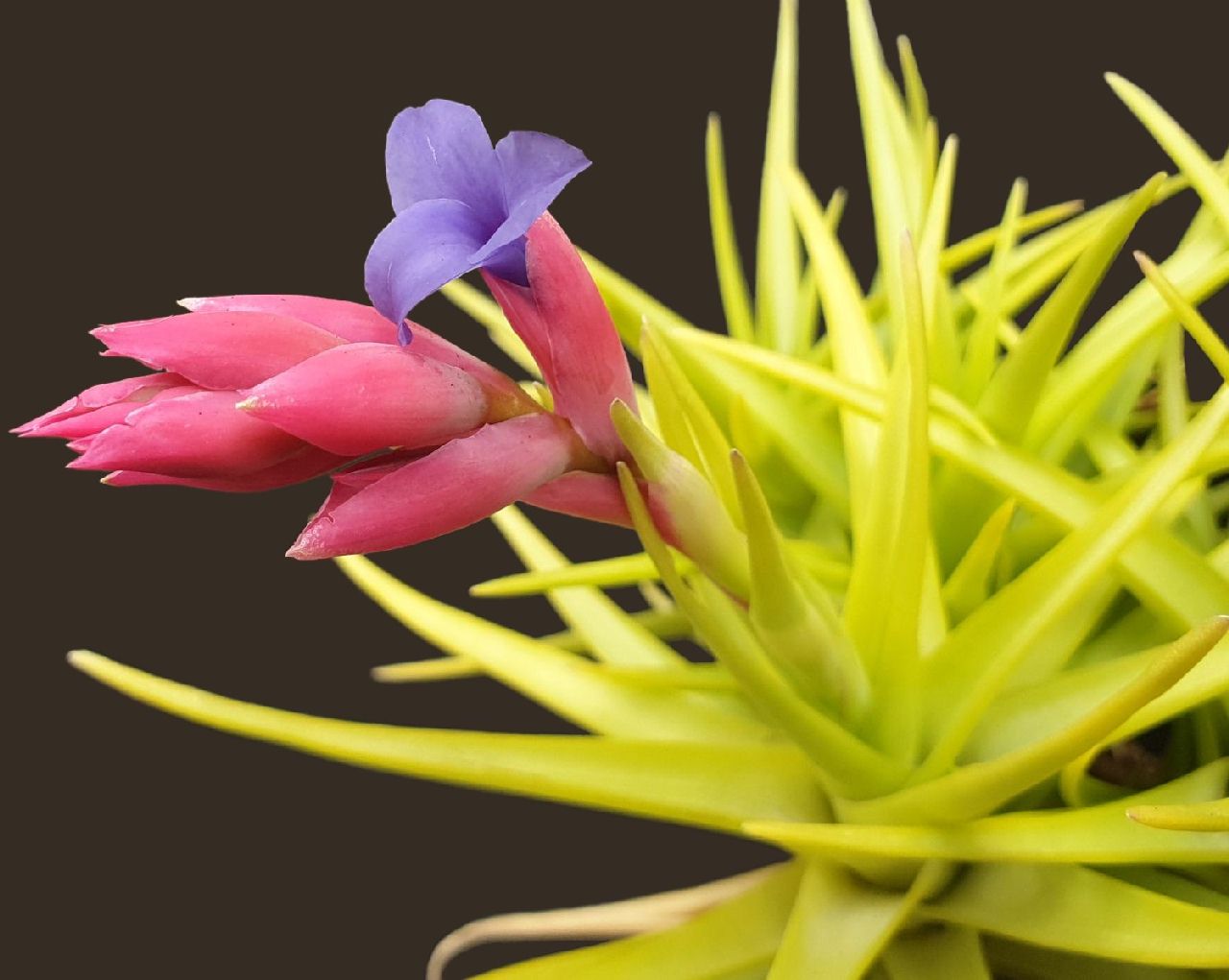
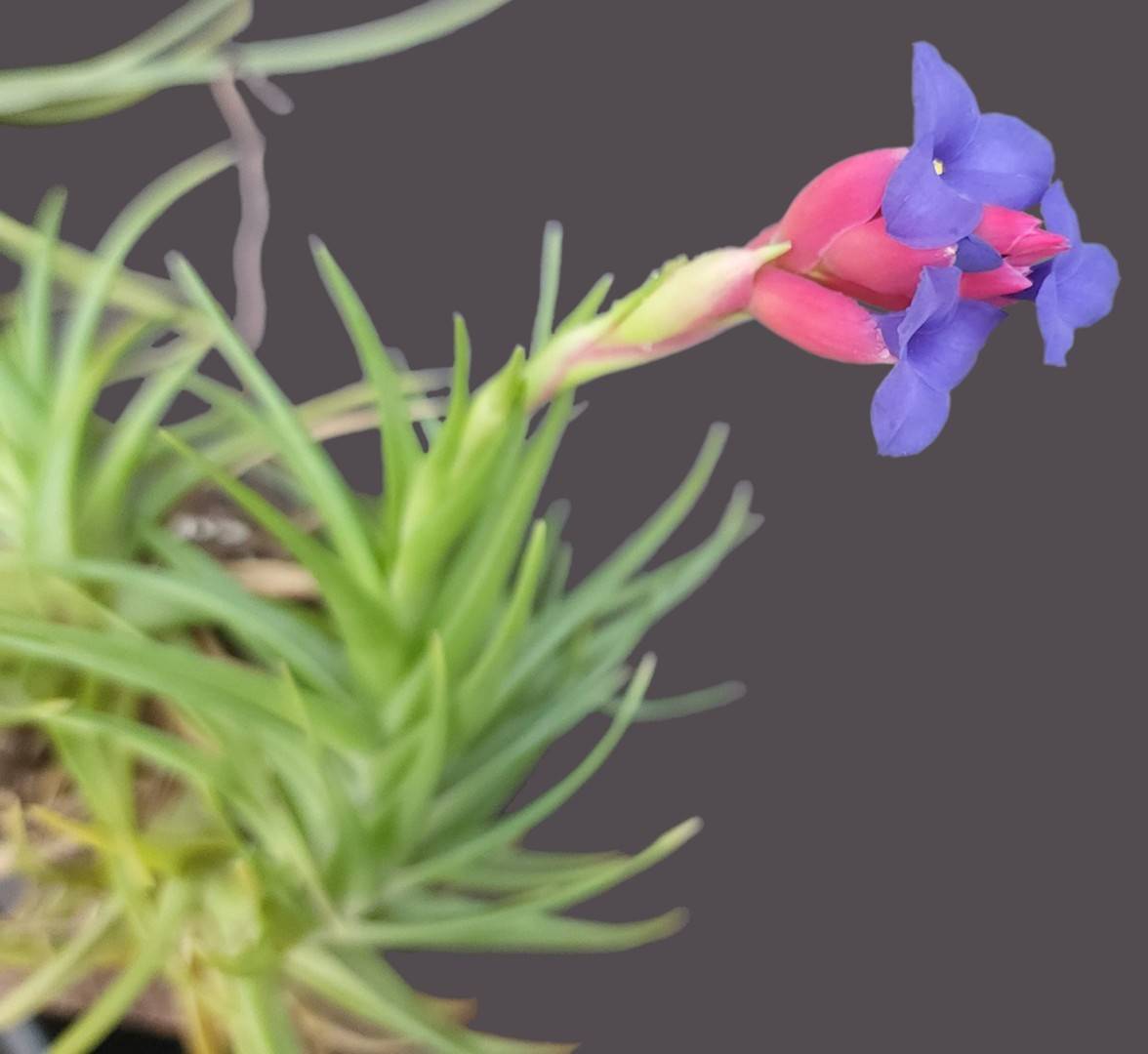
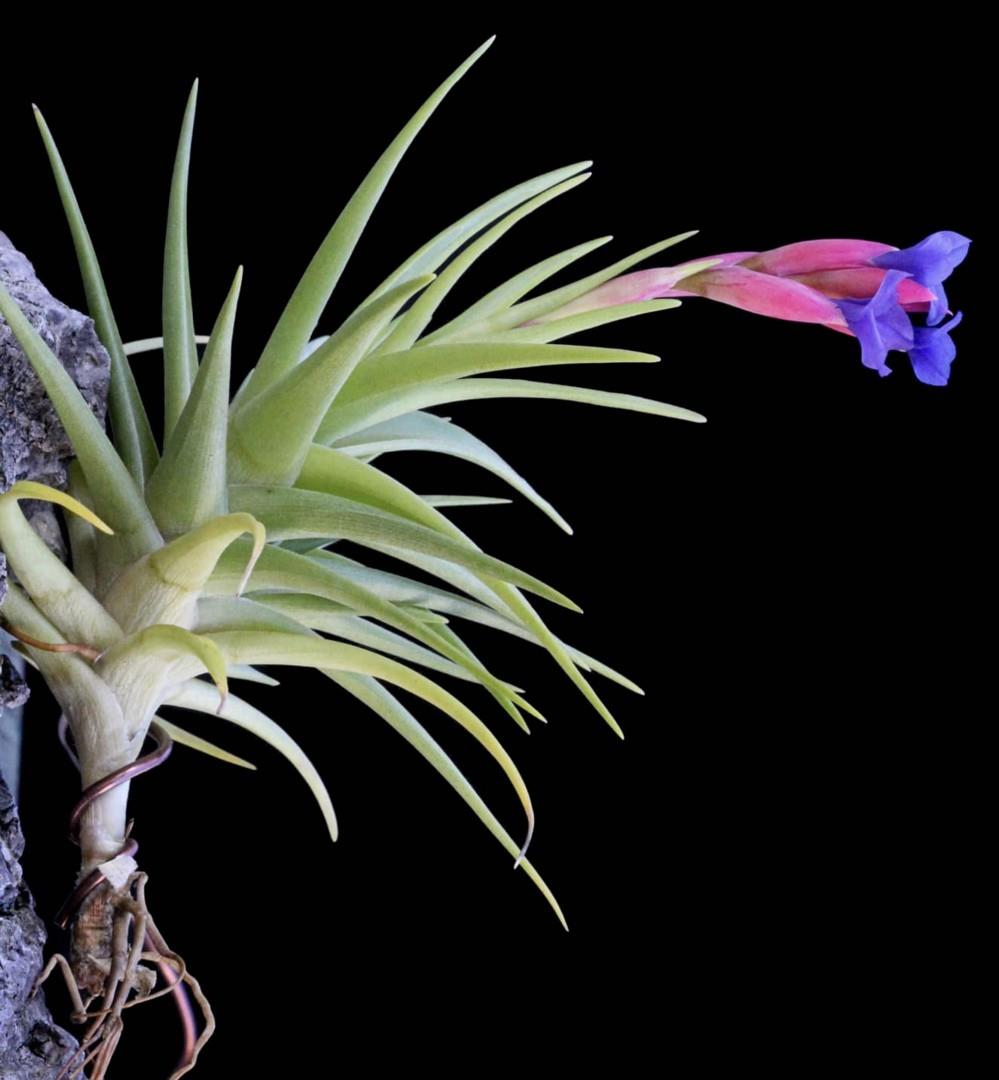

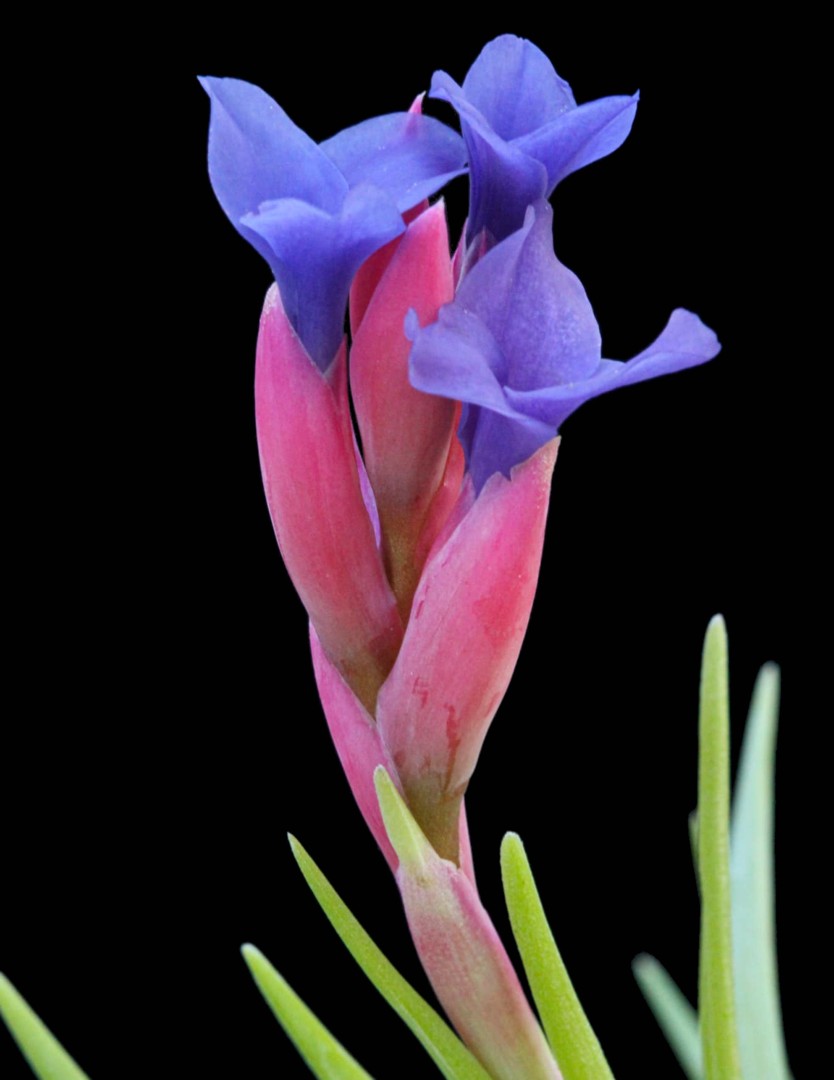
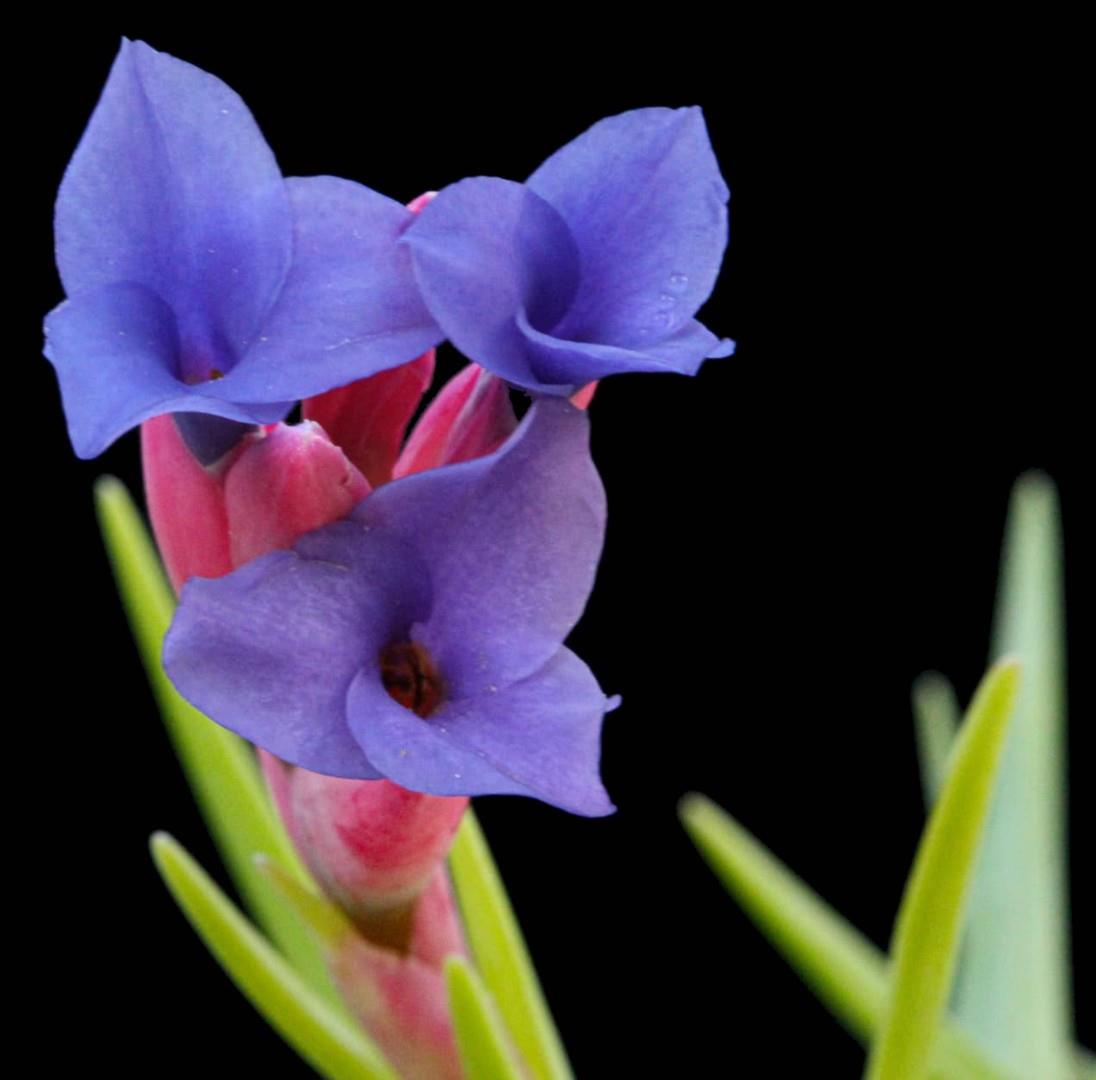
Diagnosis: Planta caulescens; florens ad 10-30 cm alta. Folia viridi; lamina ad 10-12 cm longa, ad 1.8-2cm lata. Inflorescentia simplex; 5-6 flora; bracteae scapi foliis similes, longiores quam internodia; bracteae florales ad 2.3-2.5 cm longae, ad 1.6-1.8 latae, rubrae. Sepala ad 1.5-1.9cm longa. Petala ad 2.5-3cm Ionga, apex acutis, coerulea.
Holotypus: BRASILIA. Rio Grande do Sul. Capapava, Pedra do Segredo, 6. VIII 1990,. T. Strehl 1097 (HAS 31017). Paratypus: ibidem,. 6.XII 1989, T. Strehl 1064 & J. C. da Silva (HAS 30590).
Plant saxicola, strong and simple roots, stem as a rule well developed, 20-30 cm long. naked rhizome, only the sheaths of the leaves remaining at the end of the year.
Leaves 12-16, disposed polistichously compactly:
Sheaths membranacea, transparent, short, 1cm long, 1-2 cm wide;
Blades triangular, acuminate, succulent, grooved-concave, apex somewhat obtuse, green, 8-10 cm long, 1.5-1.8 cm wide at the base, with appressed scales, inconspicuous on both faces.
Scape erect, glabrous, at the base covered by green bracts and close to inflorescence red bracts.
Inflorescence compact, simple, polistichous, 5 cm long, 5-6 flowers.
Floral bracts large, inflated, imbricate, red or rosy, with white scales especially close to the apex; more on the outer face, lineal oval, not keeled, 2.3-2.5 cm long, 1.8-2 cm wide, rounded apex, mucronate.
Flowers erect, sessile.
Sepals membranaceous, transparent, more clear than the bracts, the abaxial free, the adaxial connate to 3-4 mm from the apex, carinate, 1.5-1.9 cm long.
Petal blades elliptic, round. acuminate apex, part evident at anthesis, 2.5-3 cm long; the claw white and the blade dark blue.
Stamens included, 1.5-1.7 cm long; filaments a little enlarged before anthesis. Strongly plicate especially in the top half, white;
anthers yellowish, lineal, approximately 4 mm long.
Ovary oval, narrowing to the apex;
Style 1.2-1.3 cm long, white:
stigma longer than the anthers.
Capsule cylindrical.
Habitat: pendant on the sandstone walls of rocks in the formation called Pedra do Segredo.
Fenologia: No particular time of flowering; it has been seen flowering in the months of January, March, April, July, August, October and November.
Etymology: the name makes reference the beauty of the species and of the place where it grows.
Comments: the species seems linked with T. polzii R. Ehlers, but differs in the following characteristics:
Leaves almost glabrous, green;
Inflorescence compact, rachis not visible;
Bracts, sepals and much smaller petals than in T. polzii and the blades of the petal dark blue.
In the aspect and in the color it reminds a little of T. aeranthos, but differs in the texture of the leaves, the form of the bracts and petals and in the number of flowers.